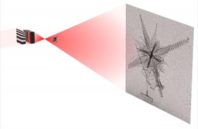A multilayer pair of materials, tungsten carbide and silicon carbide, was used to prepare high-efficiency, high-numerical aperture (NA) multilayer Laue lenses (MLLs). In a series of studies, Saša Bajt of Deutsches Elektronen-Synchroton (DESY) and co-workers used a pair of MLLs to achieve a 2D focus of 8.4 × 6.8 nm at a photon energy of 16.3 keV. They demonstrated scanning-based imaging of samples with a resolution below 10 nm. The high NA of the lenses also allowed projection holographic imaging with strong phase contrast over a large range of magnifications.
New Lens Provides Nanometer-Scale Resolution


 (585) 768-2513
(585) 768-2513
